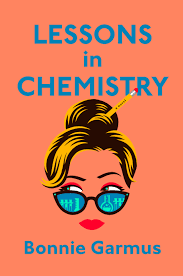Chapter 37: Sold Out
byThe chapter titled “Sold Out” presents a compelling examination of the dichotomy between personal authenticity and public perception, centered on the life of Elizabeth Zott. As a scientist turned television icon, Elizabeth has become an enigma in the public eye, admired by some and scrutinized by others. Her fame, fueled by her hit TV show Supper at Six, has created a persona that often overshadows her true self. This chapter, narrated from the perspective of Roth, a seasoned journalist for a renowned magazine, delves into the complexities of Elizabeth’s life and the societal forces that have shaped her journey.
Roth begins his assignment with a professional detachment, expecting to produce another profile piece that caters to the magazine’s readership. However, as he interviews Elizabeth, he is drawn into the depths of her story. Elizabeth recounts her life with unflinching honesty, revealing a history marked by extraordinary resilience and defiance of societal norms. She speaks candidly about her relationship with Calvin Evans, a brilliant scientist who was not only her intellectual equal but also her soulmate. Their connection was defined by mutual respect and shared passion for discovery, a rare bond that transcended the superficialities of the world around them. Calvin’s untimely death left a void in Elizabeth’s life, one she has struggled to fill amid the demands of her public and private personas.
Elizabeth’s account also sheds light on the systemic challenges she faced as a woman in science, a field dominated by men who often undermined or outright stole her work. Her experiences with Dr. Donatti, a colleague who betrayed her by claiming credit for her groundbreaking research, encapsulate the broader gender inequities that plague not only the scientific community but society at large. These betrayals did not break her spirit but instead fortified her resolve to use her platform to challenge these injustices. Through her show, Elizabeth not only shares recipes but also subtly weaves messages of empowerment, urging her audience to question the limitations imposed by societal expectations.
As Roth listens, he finds himself grappling with his own biases and the nature of his profession. The media, he realizes, often prioritizes sensationalism over substance, reducing complex individuals like Elizabeth to simplistic narratives that serve commercial interests. Roth sees an opportunity to use his article to tell Elizabeth’s story with the depth and nuance it deserves. He decides to focus on the educational value of Supper at Six and its impact on viewers, particularly women who have been inspired to pursue their own dreams and break free from traditional roles.
Despite Roth’s intentions, the final portrayal of Elizabeth in Life magazine veers toward the sensational. The editors choose to emphasize her physical appearance and the more controversial aspects of her show, sidelining the profound insights and achievements that define her. The public’s fascination with Elizabeth’s image overshadows her message, creating a chasm between the person she is and the persona the world perceives. This distortion reflects the broader societal tendency to commodify individuals, especially women, reducing them to marketable archetypes rather than celebrating their multidimensional identities.
Elizabeth’s reaction to the article is one of frustration but not surprise. She has long understood the media’s propensity to exploit rather than elevate, and she chooses to focus her energy on what matters most: her daughter, Madeline. Elizabeth’s dedication to shielding Madeline from the harsh realities of the world she navigates underscores her role not just as a public figure but as a mother determined to nurture her child’s sense of self-worth and possibility.
Roth, meanwhile, wrestles with his complicity in the process. Though he tried to honor Elizabeth’s story, he cannot ignore the reality that his work was co-opted to serve the magazine’s agenda. This realization forces him to confront the ethical dilemmas of his profession and the ways in which the media shapes public perception at the expense of truth.
The chapter concludes on a reflective note, highlighting the ongoing tension between personal authenticity and public expectation. Elizabeth’s journey, as told through Roth’s eyes, is a testament to her resilience and her refusal to be defined by the limitations others impose. Her story invites readers to consider the cost of visibility in a world that often values spectacle over substance and challenges them to seek the truth beyond the headlines.
By blending Elizabeth’s personal struggles with broader societal critiques, the chapter weaves a narrative rich in themes of integrity, gender bias, and the power of perseverance. It underscores the importance of authentic storytelling and the need to recognize the complexities of those who dare to defy convention, offering a poignant commentary on the intersection of individuality and public life.


